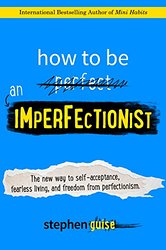Content Marketing Versus Content Publishing
Case Study: Nick Loper Builds Brand Authority With E-books

Case Study: Stephen Guise: An Independent Author Focused On Quality
The buzzword in Internet marketing for the past three years or so has been “content marketing”. The term is nothing new, the concept even less so. In fact, content marketing as a strategy is more than 100 years old as brands late in the 19th century used a form of it to promote their products. Much of what is hawked as content marketing today is what I prefer to call content publishing. And you might ask, “Well, what’s the difference?”
It’s a good question. Let me try to answer it.
What Is Content Marketing?
Consumers today are more likely to research products before they buy them and do not want to sit through a boring sales pitch.
- White papers
- E-books
- Blog posts
- Case studies
- Infographics
- Videos
- Podcasts
- How-to guides
And essentially anything that serves as a vehicle for disseminating information about a particular brand in such a way that it comes across as informational more so than promotional. It can often take the form of entertainment, or it can simply be straightforward educational. What it is not is glossy, slick, and promotional in the way that much of the mass marketing was in the 20th century. There is a reason brands migrated to using content marketing strategies in the late 20th and early 21st centuries. Actually, there are a number of reasons.
- First, consumers have grown tired of the interruption form of marketing where they are distracted from their routines to hear a spiel;
- Secondly, interruption marketing has become less effective as consumers have tuned it out;
- Thirdly, the Internet (an information medium) has spawned a demand for content that appeals to one of two sensations: 1) The need to be entertained; and 2) A desire to be informed.
In essence, consumers today are more likely to research products before they buy them and do not want to sit through a boring sales pitch.
My wife and I recently visited the local Verizon store because we wanted to purchase a Jetpack, Verizon’s mobile wi-fi hotspot. My wife had researched the product and determined that’s what we wanted. When we arrived at the store, the sales clerk tried to sell us on a contract service, but my wife was quick to point out that we’d rather use the pay-as-you-go prepay plan. She knew precisely what she wanted due to the ability to conduct in-depth research online about the product and its competition, which was possible in large part because of content marketing.

In the end, Verizon wouldn’t sell us a Jetpack at the store. We had to order it online. That’s a shame. It won’t deter us from buying the product that best suits our needs, but Verizon lost an opportunity to win over a loyal customer.
Today’s online information culture allows brands, large and small, an ability to publish information about their products and make it easily accessible to consumers who will spend the time researching purchases before making them. This content is generally published in a variety of media on the Internet, through mobile apps, and through other digital technologies. But rather than simply publish dry information that gives specs, presents colors and sizes in a newfangled format, and positions your products with a buy button, brands are finding it more effective to use a soft sell approach that lures consumers to the sales page.
Inform first. Sell second.
Enter Content Publishing
 To be honest, there isn’t a lot of difference between content marketing and content publishing. The big difference is that the former doesn’t necessarily require the latter.
To be honest, there isn’t a lot of difference between content marketing and content publishing. The big difference is that the former doesn’t necessarily require the latter.
Let me explain.
Brand X sends out a press release to 100 media outlets. A dozen of them pick up the story and develop content around that brand’s release. This is often called “earned media”. Consumers usually call it “news”. Of course, where consumer information is concerned, news can often have a “feature” feel. There’s nothing wrong with that. It’s helpful information to the consumer if it’s honest.
In this scenario, the brand is not the publisher. The media outlets (blogs, websites, journals, newspapers, YouTube channels, etc.) that distribute the information are the publishers. But Brand X is engaged in content marketing. The same thing happens when Brand X sends a sample to a blogger and asks them to write a review. However, when Brand X produces a white paper about a problem consumers face and which can be solved by Brand X’s flagship product and makes that white paper available on its website, that is content publishing. It’s also content marketing, but the brand has now entered the field of publishing.
Why does this matter? When you engage in content marketing, you do not always control the message. However, when you engage in content publishing, you always control the message. With content marketing, you do not need to control the medium; with content publishing, you almost always control the medium.
Let’s compare a few forms of content marketing against similar forms of content publishing:
Content Marketing
- Writing a guest blog post for someone else’s blog
- Publishing a book through a small press
- Being interviewed on a podcast
- Contributing to a series of case studies published in a consumer magazine
- Getting your name on an infographic list of top influencers in your niche
Content Publishing
- Publishing a post on your own blog
- Publishing an e-book yourself, or a print book through a POD (print on demand) service
- Producing your own podcast
- Presenting a case study on your own blog or website or as a downloadable PDF on your website
- Creating an infographic of top influencers in your niche
In many ways, content publishing is more powerful. That’s not to say you should never engage in content marketing. What I am trying to say is you should not engage in content marketing without doing any content publishing. Be a marketer, but become a publisher. You want some content that you own and control in your mix of information peddling. Otherwise, you may find yourself some day seeing all your messaging disappear or become someone else’s digital litter box liner.
How to Get Started With Content Publishing
 Chances are, you’re already doing some content publishing. If you have a blog, then you’re publishing. You may not think of it that way, but you should. What I’d like to impress upon you is the idea that you can grow the publishing side of your business, and there are several reasons why you might want to.
Chances are, you’re already doing some content publishing. If you have a blog, then you’re publishing. You may not think of it that way, but you should. What I’d like to impress upon you is the idea that you can grow the publishing side of your business, and there are several reasons why you might want to.
- Grow your revenue
- Increase the channels through which you earn revenue
- Grow your mailing list
- Segment your mailing list
- Establish yourself as a niche authority
- Enhance the quality of your product or service
- Boost your audience’s perception of your image
- Expand your reach
- Maintain control over brand messaging
- Be more consistent and effective in communicating your core business values
And this is just a start. As a publisher, you’ll have a lot more credibility with your audience than you’ll ever gain as a simple marketer. If you engage in content marketing and stop there, your audience will always perceive you as a marketer. Even if you perfectly manage to inform and entertain using the soft sell approach, your audience will have their guard up against the marketing message because today’s sophisticated readers are fed up with marketers. Even the good ones.
Publishers, however, are a different story. Publishers are generally seen as unbiased, and if you produce valuable content that informs your audience without tilting it in your favor, you’ll be unbiased. That adds to your brand credibility.
Here are 5 classy brand magazines that make their brands look like world-class publishers.

Online brand magazines are becoming more common. For the past 10 years, brands attempted to increase their brand image through a blog. It worked for a while. Now that everyone is doing it, it’s more difficult to distinguish yourself from your competition. But few brands have caught on to the online brand magazine fever. Those that have enjoy increased credibility and enhanced authority. Sure, there is an expense, but that expense translates into a stronger brand overall.
To get started, you need to decide on the medium. Start small. If you do not yet have a blog, start one. Your blog can more easily be transitioned into a brand magazine than your website because it is by nature issue-oriented (if you consider each blog post or category on your blog an “issue”).
A website is a static product. It’s the hub of your online business, your face. Your blog, however, is your tool for mass communication.
Great publishers don’t just offer one product. They also publish continuous streams of information products, which may include white papers, case studies, e-books, special reports, slideshow presentations, infographics, and more. The idea is to keep publishing content that is valuable and drives traffic back to your website where you can capture audience contact information and pull your audience deeper into your information/sales funnel.
Start small and create a calendar. For instance, you may decide to publish a 750-word case study about one of your customers and how she solved a problem with your service. Next month, do it again.
As you grow your publishing enterprise, monitor which products are getting the best reactions and duplicate those. Know from the start what your goals are. Do you want to increase your revenue and create more revenue channels or are you interested in boosting your audience’s perception of you as an authority? Those goals will tell you how to grow your publishing efforts.
If revenue is a goal, you may want to publish e-books and distribute them through the online book stores. This will also enhance your authority, but it gives you opportunities for increasing revenue. If your primary concern is enhancing your authority and growing your list, then offer products for download on your website. There’s no rule that says you can’t do both. But you should outline your goals before you begin so that you stay focused on what is important in reaching those goals.
Finally, when you find something that works, repeat it. And keep repeating it until it no longer works.
 Are you ready to boost your authority? Looking for ways to expand your reach and deliver the best content for your niche audience? Download my free report, “14 Types of Authority Content“. Learn the 14 types of content that will keep your audience coming back for more and instantly make you an authority they can rely on.
Are you ready to boost your authority? Looking for ways to expand your reach and deliver the best content for your niche audience? Download my free report, “14 Types of Authority Content“. Learn the 14 types of content that will keep your audience coming back for more and instantly make you an authority they can rely on.


